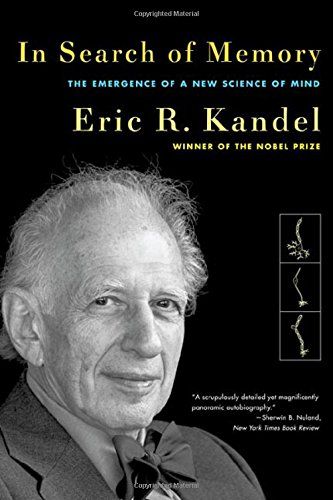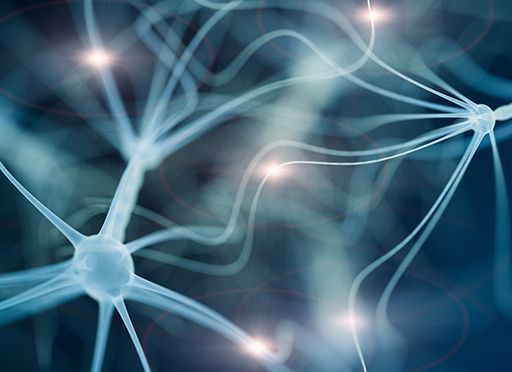Nobel Prize winner Eric Kandel traces his career in medical research and illuminates the philosophy and curiosity that fueled his myriad crucial discoveries.

The Brain and Memory
Nobel laureate Eric Kandel shares his scientific journey in compelling and emotional prose. From being attacked by Nazis in 1938 Austria, to earning the Nobel Prize in Physiology or Medicine in 2000, Kandel weaves tragedy, art, literature, love and science into a beautiful mosaic. He writes with a soulful sense of life’s briefness and the joy of a transcendent passion.
Nazis
On November 7, 1938, Kristallnacht, Nazis ordered Eric Kandel’s family out of their apartment, and stole most of its contents. The Nazis banned Jewish doctors and professors from working. The Kandels fled to America.
Remembering the past is a form of mental time travel; it frees us from the constraints of time and space and allows us to move freely along completely different dimensions.Eric Kandel
Kandel’s first obsession was trying to understand how non-Jewish Austrians could listen to Mozart one day, and beat up and rob Jews the next.
Kandel majored in European history and literature at Harvard and fell in love with Anna Kris, a Viennese woman studying at Radcliffe. Kandel grew close to Anna’s parents, prominent New York psychoanalysts.
The Mind and the Brain
Kandel read Freud, and wondered about the locations of Freud’s notions of ego, superego and id in the brain.
He studied neurophysiology at Columbia University under Professor Harry Grundfest, who seeded Kandel’s interest in the Freudian notion that understanding the mind had to start at the most fundamental, reductionist level: the individual brain/nerve cell, or neuron. Kandel secured a post to the neurophysiology lab at the National Institutes of Health (NIH) in 1957.
Brain Cells
In the late 19th and early 20th centuries, Spanish anatomist and Nobel Prize winner Santiago Ramón y Cajal discovered that nerve cells communicate using chemical signals, or neurotransmitters. Sensory neurons send signals such as touch, vision and hearing to the brain. Interneurons pass information from sensory neurons to motor neurons, which communicate with cells in the spinal cord to effect muscle movement.
Cajal laid the foundation for the modern study of the nervous system and is arguably the most important brain scientist who ever lived.Eric Kandel
Not long after, Charles Sherrington discovered that some interneurons act as inhibitors, blocking signals to muscle cells. This important evolutionary feature prevents chaos by prioritizing certain actions over others.
Electrical Pulses
When a brick falls on your toe, for example, the sensory cells in your foot send signals to your brain. The greater the shock to your sensory neurons, the greater the urgency of the signals, and the more likely interneurons will prioritize them. This causes a reaction, like jerking back your foot from the blow.
Neurons create the proteins used in signaling, and in the conversion of electrical signals to chemical and back again.
Psychologist Brenda Milner
Versed in the groundbreaking work of psychologist Brenda Milner, Kandel spent his three years at NIH studying the role of the hippocampus in forming short- and long-term memory. Milner had discovered that the critical structure in explicit memory storage and long-term memory storage is the hippocampus region of the brain.
The idea that different regions of the brain are specialized for different purposes is central to modern brain science.Eric Kandel
Explicit or declarative memory, concerns remembering facts such as people, places and objects. Implicit or nondeclarative memory enables reflexive and unconscious actions that require attention as you first learn them, but become automatic. These include motor skills such as riding a bike or shifting the gears in a car. Different parts of the brain enable the functions of the two memory systems.
Solving Memory
While at NIH from 1957 to 1960, Kandel and his partner Alden Spencer became the first researchers to record activity from individual cells in the hippocampus.
Kandel studied the simplest forms of memory in the most basic animals, the sea snail (aplysia), which features a manageable number of nerve cells, including some of the largest among all animals.
One ultimately has to trust one’s unconscious, one’s instincts, one’s creative urge. Eric Kandel
Kandel wanted to study the hippocampus for the role it plays in memory storage. Turning to the sea snail was a radical idea.
Neuroendocrine Cells
During his residency in psychiatry at Harvard Medical School, Kandel worked on goldfish, becoming the first researcher to show that neuroendocrine cells in the hippocampus also act like nerve cells. Returning to the sea snail after his residency, Kandel received an NIH grant to continue his work for a year in Paris with Ladislav Tauc, a pioneer in the study of aplysia.
Long-Term Memory
In 1965, Kandel took an appointment to the neuroscience faculty at NYU, focusing on proving that nerve cells alter behavior through learning. Over the next two decades, Kandel and colleagues gained deep understanding of how repeated stimuli can alter neurons and the brain by provoking enzymes that generate proteins (regulators) that switch on dormant mRNA genes. This causes other proteins to build stronger connections in synapses.
These chemical reactions, including the release of multiple pulses of serotonin, strengthen synapses. They also build new ones – new connections and better communications in the brain that generate long-term memories.
Changes in behavior are accompanied by changes in the strength of the synapses between neurons that produce the behavior.Eric Kandel
When you learn something, signals flow into your brain that activate modulatory pathways or circuits. These cause connections between nerve cells to change in function. If something is important to you, you do it more, and remember it longer.
The Nobel Prize
On October 9, 2000, Kandel won the Nobel Prize in Physiology or Medicine for his work in discovering how neural transmitters and proteins create short- and long-term memory.
Review
Kandel writes with charm, ease and irrepressible joie de vivre about the most daunting and complex subjects. He is remarkably upbeat, and thus renders his esoteric world comprehensible and fascinating even for the layperson. Those vested in Kandel’s fields will find a gold mine of history, research and discovery processes. Those who know nothing of his worlds will have their minds expanded by reading about their minds. Kandel’s memoir proves equally valuable to scientists, amateurs, and those whom the sweep of history and ideas compel. He manages to make even sea snails vital and engrossing.
Eric Kandel also wrote There Is Life After the Nobel Prize; Reductionism in Art and Brain Science; The Disordered Mind; and The Art of Insight.





